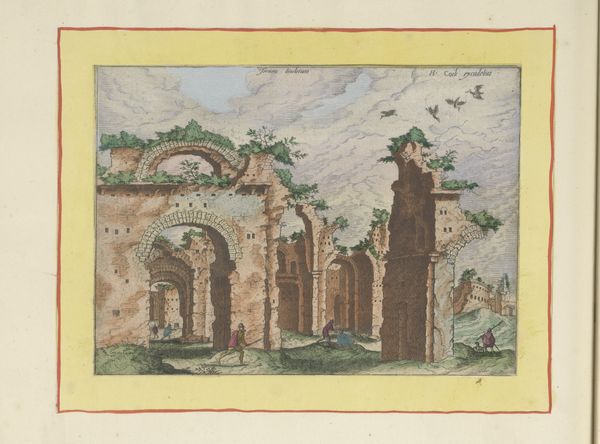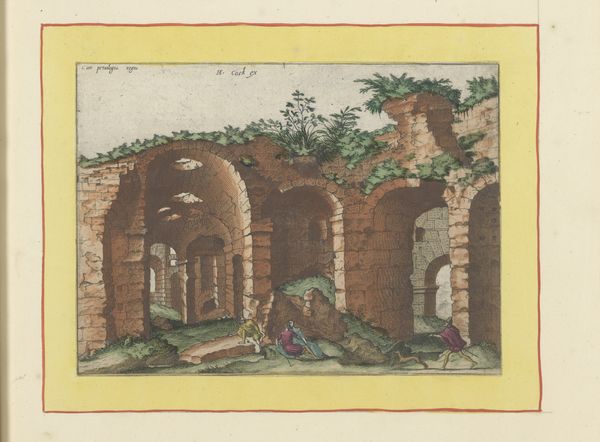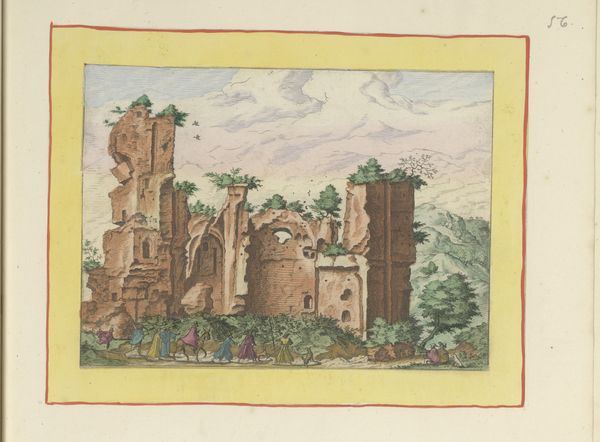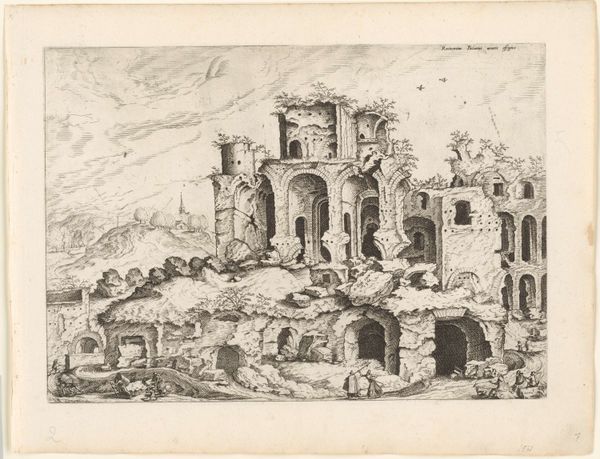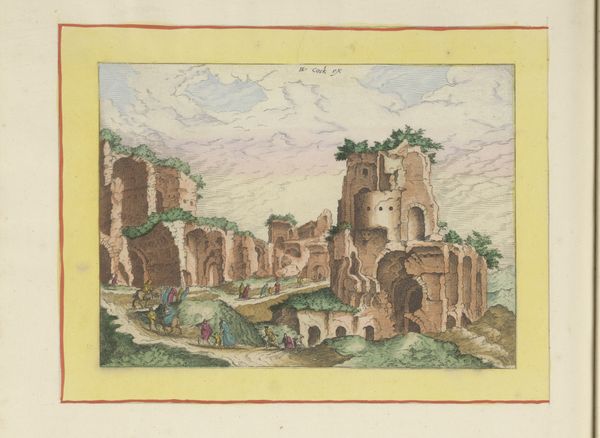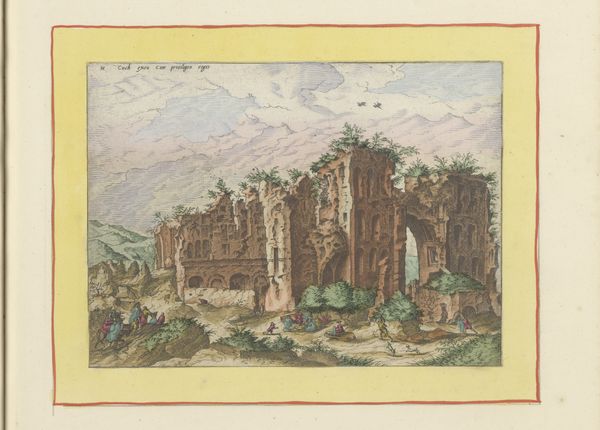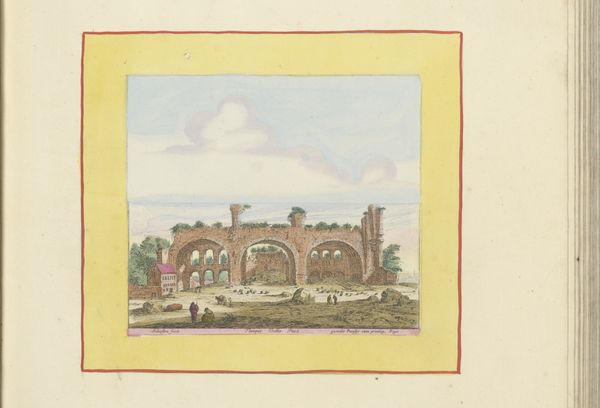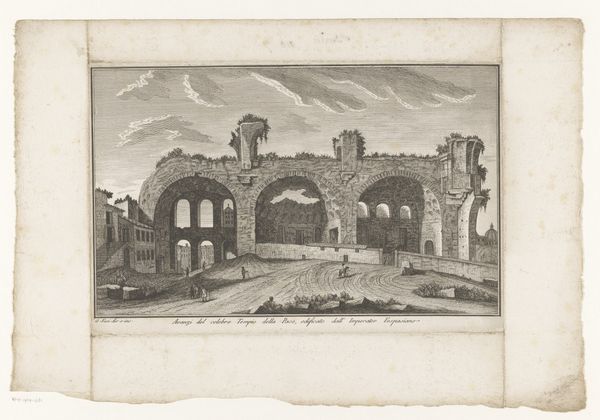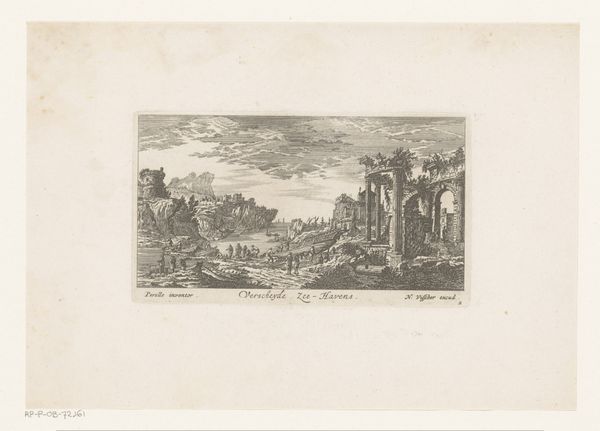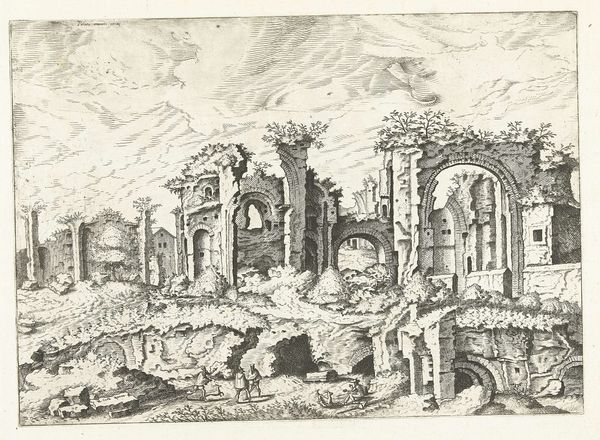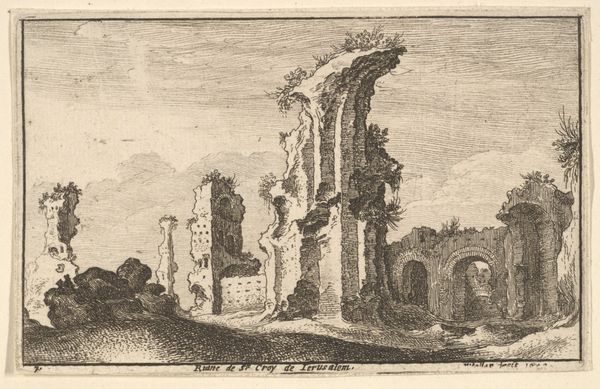
print, etching, engraving
#
medieval
# print
#
etching
#
landscape
#
coloured pencil
#
history-painting
#
engraving
Dimensions: height 154 mm, width 214 mm
Copyright: Rijks Museum: Open Domain
Curator: This is a print entitled "Ruïnes op de Palatijn te Rome," or Ruins on the Palatine Hill in Rome. Created by Joannes van (I) Doetechum between 1562 and 1717, it combines etching and engraving. What’s your first take on it? Editor: My immediate impression is of a tranquil scene, despite depicting ruins. The muted colors and small figures create a sense of timelessness and decay. It feels strangely peaceful. Curator: The Palatine Hill was, of course, one of the most important of the seven hills of Rome. Visually, note how the artist portrays these crumbling architectural remains. How do they make you feel, particularly considering the enduring significance of the Roman Empire? Editor: There's a distinct melancholic quality, isn’t there? The architectural ruins are obviously central. They communicate more than just structural decay; they're potent symbols of lost grandeur, almost serving as reminders of our own mortality. Look how nature has begun to reclaim these human-made structures. Curator: Precisely! Consider how the imagery of ruins has functioned through art history. This image prompts us to reflect on power, legacy, and the cyclical nature of civilizations. These ruins carry powerful symbolism related to classical ideals being overtaken by the passage of time and changing social systems in Europe. Editor: And the figures, though small, feel significant. They humanize the landscape. But the way they’re included, as almost wandering through the aftermath of greatness, evokes reflection on human activity and our small impact. Curator: Agreed. Think about how prints like these circulated in early modern Europe. They shaped how people who might never visit Rome understood its history and antiquity. The distribution networks for prints and engravings facilitated a kind of virtual cultural tourism. Editor: The visual symbols here are layered then: Rome, its fall, its representation. I can also feel this print, with its use of line and shading, hinting towards its own creation through meticulous engraving. Curator: A fascinating intersection of material processes, representation, and historical significance, all captured in one printed image. Editor: Absolutely. It brings us face to face with layered perceptions, inviting considerations of cyclical shifts in culture and the poignant ephemerality of human existence.
Comments
No comments
Be the first to comment and join the conversation on the ultimate creative platform.
